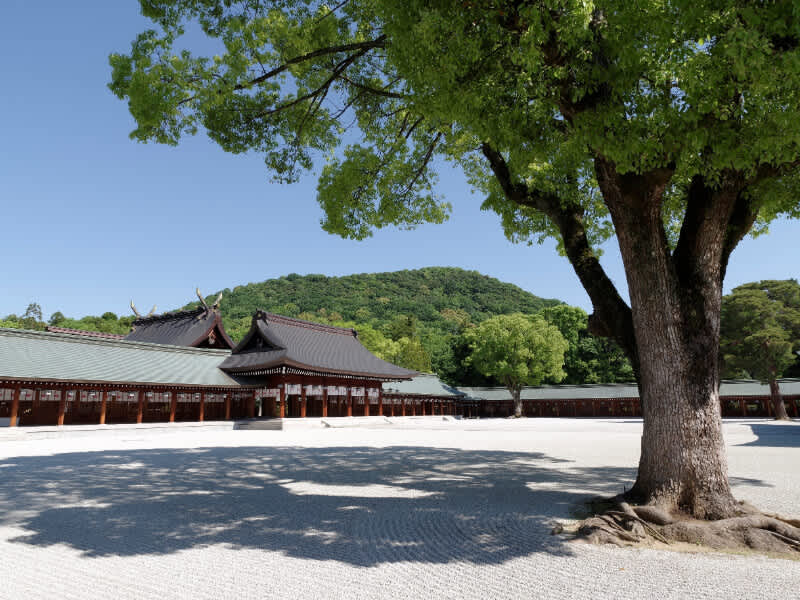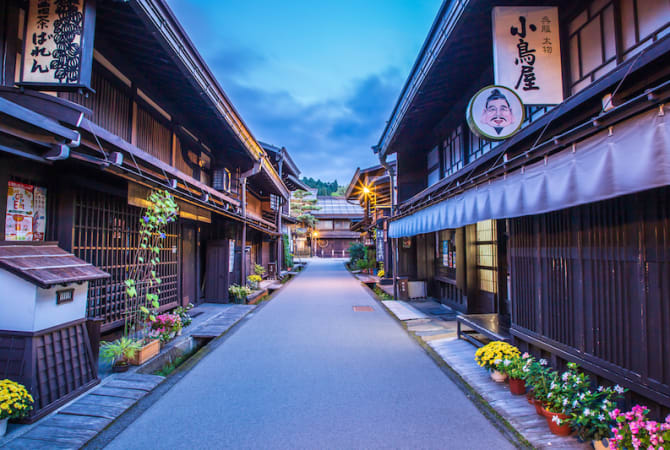Travel Back In Time In Nara
Nara is best known for locations and attractions like Nara Park and the Todai-ji Temple, but it’s also home to many historical districts like Asuka, Imaicho, and Gojo Shinmachi.
Nestled approximately one hour away from tourist hotspots like Osaka and Kyoto, Nara is filled with destinations and activities for people who want to immerse themselves in Japan’s rich history and heritage when visiting the Kansai region.

Nara houses some of Japan’s oldest political and spiritual sites, making it one of the country’s most cultural and historical destinations to visit. © JNTO Photo Library
The city of Nara may be best known for Nara Park, where deers roam freely for tourists to feed. It’s also the location of the grand Todai-ji, a temple complex that was once one of the powerful Seven Great Temples of Nara. But there are more places in this prefecture other than these spots that are just waiting to be discovered.
Below is our suggested itinerary to help visitors explore Nara to its full extent.
1. Cycle through Asuka Village
- Asuka served as Japan’s political center from 592 to 710, during the Asuka Period.
- Some of its top spots include the Takamatsuzuka Tomb, the Okadera Temple, and the Asukadera Temple.
- A panoramic view of the town can be seen from the Amakashi no Oka park.
When we think of Japan’s center, Tokyo naturally comes to mind because it is the country’s current capital. Some may also perhaps think back to Kyoto, since the place served as the country’s capital from 794 through 1868. However, one place often overlooked when talking about some of Japan’s first capitals is the Asuka Village in Nara, which held the title from 592 to 710 (Asuka Period).

Asuka Village in Nara. ©Nara Visitors Bureau
At present, Asuka reflects Nara’s ancient charm, featuring archaeological sites, mountain landscapes, and rice paddies. The town is firm about preserving its traditional atmosphere, with close to no high-rise buildings in sight. Bike rentals are available at Asuka Station, allowing you to explore the surrounding spots with ease.

Ishibutai Burial Mound. ©Nara Visitors Bureau
For instance, there’s the Ishibutai Burial Mound which is known as one of Japan’s largest megalithic structures. While unconfirmed, it is believed to be the burial tomb of Soga no Umako, a strong supporter of Buddhism and the powerful leader of the Soga clan.

Takamatsuzuka Tomb. ©Asuka Village Board Of Education
There’s also the Takamatsuzuka Tomb, a circular burial mound that is said to be an ancient family’s royal tomb. For the curious, the Takamatsuzuka Mural Museum beside the hill provides an in-depth showcase of the history of the site.
The museum features a recreation of what the tomb looks like on the inside, since the actual tomb cannot be entered. It displays a reproduction of murals originally found on the plaster walls of the tomb. These murals are protected by glass panels for preservation.
Next, there’s Okadera Temple, also known as Ryugaiji or Dragon Lid Temple. Legend has it that a dragon was causing mischief in the Asuka Village centuries ago. Eventually, a priest named Gien captured the dragon by placing a large stone over a pond, now the site of the temple. This event turned the dragon into a deity that now protects the area.
The temple also features a rare Buddha statue made of clay, a contrast to the usual wood or bronze used to create the figure. This Buddha is also dubbed the “Wish Granting Buddha” and attracts people who are aiming to harness success and good fortune.

Asukadera Temple.
From there, you can head over to Asukadera Temple, one of the oldest Buddhist temples in Japan, having been built in 596 AD. It also houses the oldest Buddha statues in the country.
End your bike ride on a high by stopping at the Amakashi no Oka Park, which gives a mesmerizing panoramic view of the town. This place was said to be the site of Soga no Emishi - a powerful symbol of the Yamato Imperial Court - and his son’s mansion in the 7th century.
Asuka Village
Access: From JR Nara Station, take a short walk to Kintetsu Railways. Take the Kintetsu Line from Kintetsu Nara Station to Asuka Station. Bike rentals and guide maps to cycle around the village are found at this station.
Official website: https://english.asukamura.com/
Ishibutai Burial Mound
Address: 133 Shimashō, Asuka Village, Takaichi District, Nara Prefecture 634-0112
Access: 20- to 25-minute cycle from Asuka Station
Entrance fee: JPY300
Operating schedule: 8:30AM to 5PM (Last entry at 4:45pm)
Takamatsuzuka Tomb and Takamatsuzuka Mural Museum
Address: 439 Hirata, Asuka Village, Takaichi District, Nara Prefecture 634-0144
Access: 5- to 10-minute cycle from Asuka Station
Entrance Fee: JPY300
Operating Schedule: 9AM to 5PM (Last entry 4:30PM)
Okadera Temple
Address: 806 Oka, Asuka Village, Takaichi District, Nara Prefecture 634-0111
Access: From Asuka Station, cycle for 30 to 40 minutes to Okadera-mae bus stop and take a 10-minute hike to the temple. Alternatively, you can ride a train to Kintentsu Kashiharajingu-mae station and take a Nara Kotsu bus to alight at Okadera-mae bus stop.
Entrance Fee: JPY400
Operating Schedule: March to November 8AM to 5PM; December to February 8AM to 4:30PM
Asukadera Temple
Address: 682 Asuka Village, Takaichi District, Nara Prefecture 634-0103
Access: From Asuka Station, cycle for 15 to 20 minutes to Asukadera Temple. As an alternative, you can take a train to Kintetsu Kashiharajingu-mae Station, ride the Nara Kotsu bus to the Asuka Daibutsu-mae bus stop, and take a one-minute walk to the temple.
Entrance Fee: JPY350 for adults, JPY250 for students and seniors and JPY200 for children
Operating Schedule: April to September 9AM to 5:30PM; October to March 9AM to 5PM
2. Discover sake and samurai history at Imaicho town
- Imaicho town has well-preserved buildings from the Edo period (1603 - 1867).
- It’s two train stations away from Kashihara-jingu Shrine, where Japan’s first emperor, Emperor Jimmu, ascended to the throne.
Experience the life of merchants and samurais during the Edo period (1603 - 1867) by visiting Imaicho and its well-preserved historical buildings.

Imaicho features well-preserved buildings with their interiors now converted to modern-day establishments. ©Nara Visitors Bureau
Make a stop at Imai Machiya Museum, a merchant house located in the area that has been restored to give you a glimpse of Japan’s yesteryears with its traditional architecture. The house can be entered for free through the original ‘store-front’ where customers bought from merchants during the Edo Period.

Kashihara-jingu Shrine. ©️Kashiharajingu
Lastly, there’s the Kashihara-jingu Shrine, located two train stations away from Imaicho. This shrine is dedicated to Emperor Jimmu, Japan’s first emperor. This is said to be the area where the emperor ascended to the throne.
Amulets featuring Yatagasaru, a three-legged crow, are distributed at Kashihara-jingu Shrine.
Emperor Jimmu and his entourage were said to have been safely guided by Yatagarasu on their journey from Miyazaki in Kyushu to the Yamato Province.
Imaicho Town
Access: From Kintetsu Nara Station, take the train to Yamato-Saidaiji Station. Transfer to the train bound for Kashihara-jingu-mae and alight at Kintetsu Yagi-Nishiguchi Station. Imaicho is a five-minute walk from this stop.
Imai Machiya Museum
Address: 3-chōme-1-22 Imaichō, Kashihara City, Nara Prefecture 634-0812
Access: Take a nine-minute walk from Kintetsu Yagi-Nishiguchi Station.
Entrance fee: Free
Operating schedule: 9AM to 12PM; 1PM to 5PM (Closed on Mondays and Tuesdays if Monday is a public holiday)
Kashihara-jingu Shrine
Address: 934 Kumecho, Kashihara City, Nara Prefecture 634-8550
Access: From Imaicho, head to Yaginishiguchi Station and take the train to Kashihara-jingu-mae Station. The shrine is about a 10-minute walk from this stop.
Entrance fee: Free
Operating schedule: Varies depending on the season.
Official website: https://kashiharajingu.or.jp/
3. Get unique souvenirs from the Gojo Shinmachi district
- Gojo Shinmachi district is home to what are said to be Japan’s oldest streets.
- Many of the houses in the area have been converted to cafes, shops, and galleries while retaining their original exteriors from the Edo and Meiji eras (1603 - 1912).
Any fulfilling travel experience wouldn’t be complete without souvenirs. When in Nara, a stop at the Gojo Shinmachi district is ideal. This district is said to be the oldest street in Japan, with houses from the Edo and Meiji eras (1603 - 1912) still lined up here to this day.

Gojo Shinmachi district. ©️chocobanashi
Many of these houses have been converted into shops, cafes, and galleries, allowing travellers to explore the old-world charm of the place with modern-day conveniences.
Visit Kitayama Gyunyuten if you’re craving frozen sweets. One must-try item from the shop is the ice monaka, Japan’s version of ice cream sandwich. There’s also the famous frozen ripe persimmon treat that can be enjoyed like a sorbet. Ramune, a Japanese carbonated drink that traces its history back to the 1880s, is also available here.
This shop makes one recall the feeling of stopping by your favorite snack shop after a long day at school or work.

chocobanashi, formerly known as Mochisho Hitotsubashi is one of the district’s most recognizable landmarks. ©️chocobanashi
You can also drop by chocobanashi (formerly Mochisho Hitotsubashi) which is one of Gojo Shinmachi’s most recognizable landmarks. The shop used to sell delicious mochi but after its closure in 2018, it has now been reopened to sell handmade chocolates. The current store uses cacao beans imported from India, Ghana, Vietnam, and Belize to create their sweet treats.
This spot is great for a treat not just for your palate but also for your eyes. It sits next to the bridge by the curve of the road, which has become one of the district’s signature photo spots. The shop’s original sign has been retained to preserve its importance to the district despite the change in its main product.
Take a stop at Nakako Shoyu, where you can watch how the family-run establishment produces soy sauce which they supply to Nara’s top restaurants, too.
Apart from shoyu, Nara also has other gastronomic specialities which you can learn more about here.
Gojo-Shinmachi District
Access: From JR Nara Station, ride a train JR Gojo Station. Gojo-Shinmachi District is a 15-minute walk from the station exit.
Kitayama Gyunyuten
Address: 1-6-2 Shinmachi, Gojo City, Nara Prefecture 637-0043
Access: Take a 15-minute walk from either the Kintetsu Gojo Station or the JR Gojo Station.
Operating schedule: 9AM to 4PM
chocobanashi (formerly Mochisho Hitotsubashi)
Address: 1-3-1 Gojo, Gojo City, Nara Prefecture 637-0043
Access: Take a 10-minute walk from either the Kintetsu Gojo Station or the JR Gojo Station.
Operating schedule: 11AM to 5PM (Closed on Mondays to Thursdays)
Nakako Shoyu
Address: 1-7-18 Gojo, Gojo City, Nara Prefecture 637-0042
Access: Take a 10-minute walk from either the Kintetsu Gojo Station or the JR Gojo Station.
Operating schedule: 9AM to 4PM
Official site: https://nakako-syoyu.jp/
Nara is a charming prefecture filled with rich history and culture. Uncover them on your next visit by adding these sites to your itinerary!
Discover more of Japan. Follow us on Facebook and Instagram for fun facts and quick tips about Japan.


















































